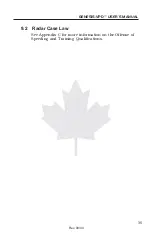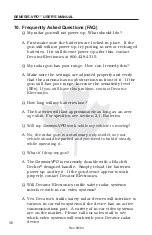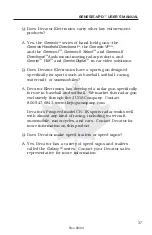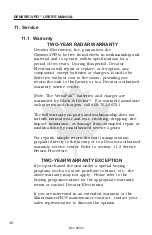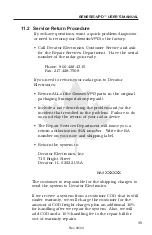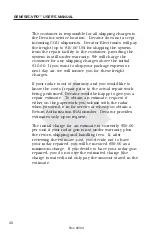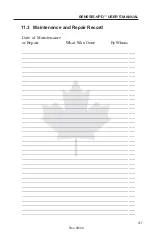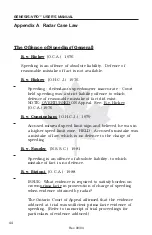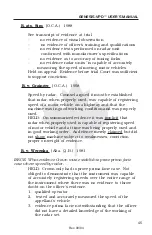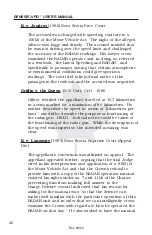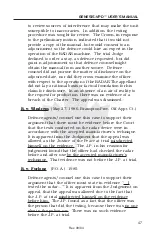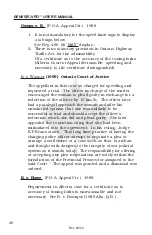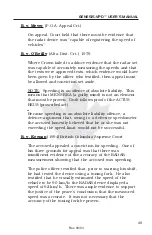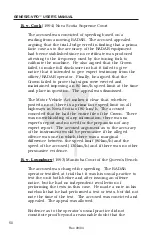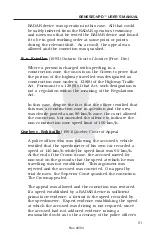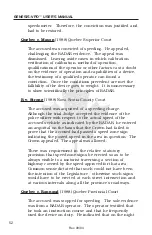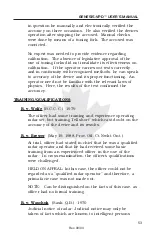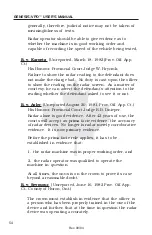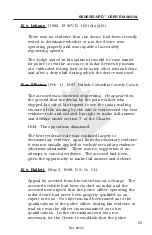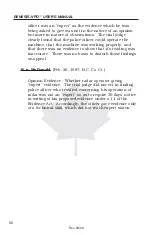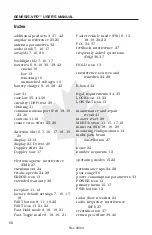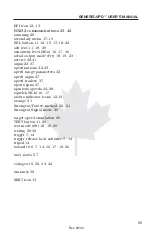
GENESIS-VPD™ USER’S MANUAL
49
Rev. 09/04
R. v. Meyer
(P.O.A. Appeal Crt.)
On appeal, Court held that there must be evidence that
the radar device was “capable of registering the speed of
vehicles”.
R. v. O’Reilly
(Alta. Dist. Crt.) 1979
Where Crown failed to adduce evidence that the radar set
was capable of accurately measuring the speeds and that
the tests were approved tests, which evidence would have
been given by the officer who testified, then appeal must
be allowed and conviction set aside.
NOTE: Speeding is an offence of absolute liability. This
means that MENS REA (a guilty mind) is not an element
that must be proven. Guilt follows proof of the ACTUS
REUS (proscribed act).
Because speeding is an absolute liability offence, a
defence argument that, owing to a defective speedometer
the accused honestly believed that he or she was not
exceeding the speed limit, would not be successful.
R. v. Keenan
(1994) British Columbia Supreme Court
The accused appealed a conviction for speeding. One of
his three grounds for appeal was that there was
insufficient evidence of the accuracy of the RADAR
measurement showing that the accused was speeding.
The police officer testified that, prior to starting his shift,
he had tested the device using a tuning fork. He also
testified that he visually estimated the speed of the
vehicle to be 90 km/h: the RADAR device displayed a
speed of 92 km/h. There was ample evidence to support
the justice of the peace’s conclusion that the measured
speed was accurate. It was not necessary that the
accuracy of the tuning fork be proven.

